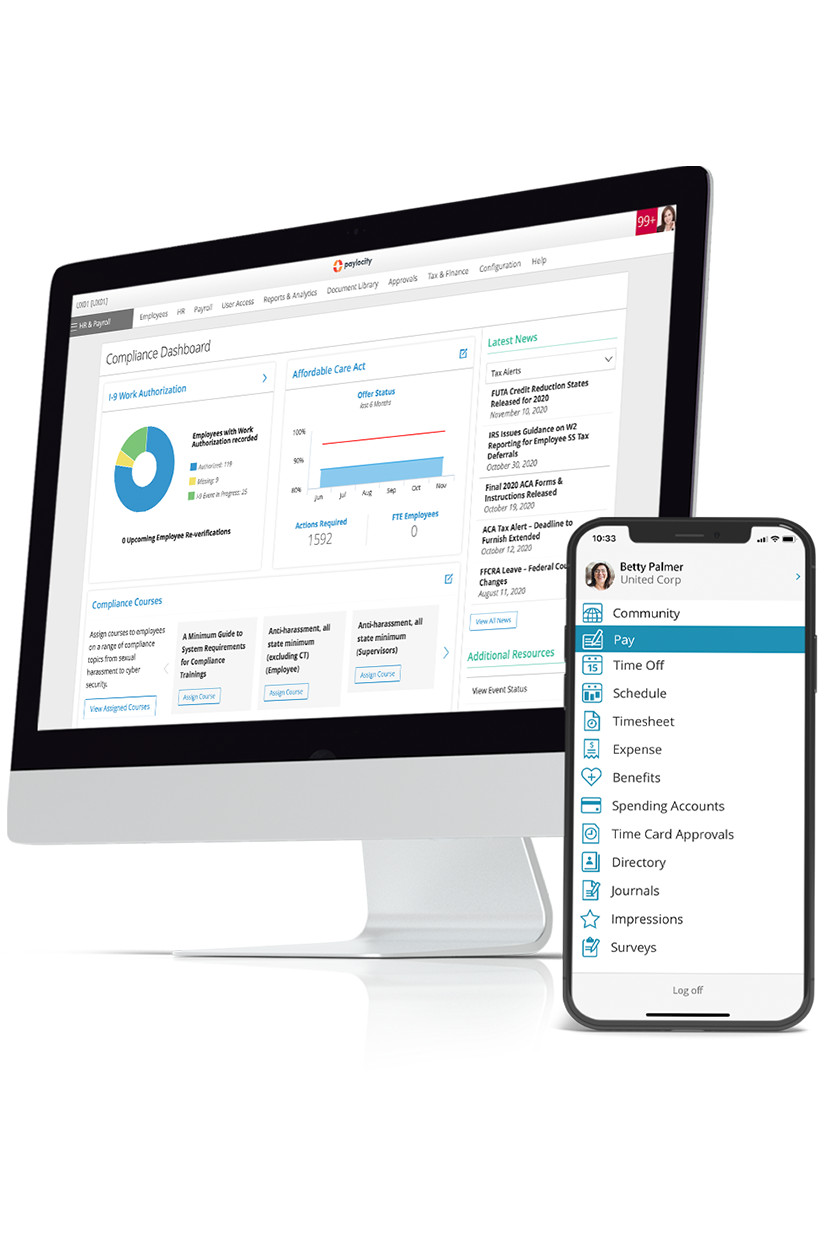resources
Disability Inclusion in the Workplace: Benefits & Strategies
October 18, 2023
Fostering disability inclusion in the workplace isn't just ethical - it's also a smart business move. Learn why and how.

Creating a truly inclusive workplace isn’t just a matter of ethical responsibility — it's also a smart business move. When organizations prioritize diversity and inclusion, they tap into unique perspectives, boost productivity, and improve company culture.
In this article, we’ll explore the importance of disability inclusion in the workplace and provide actionable strategies for making inclusivity a priority at your organization.
From leadership commitment to accessible facilities and digital platforms, these strategies can help create an environment where every employee can thrive and contribute to the organization’s success.
What Is Disability Inclusion?
Disability inclusion in the workplace is the practice of creating an environment in which workers with disabilities receive equal treatment opportunities for employment, advancement, and participation.
It involves fostering a workplace culture that values diversity and intentionally integrates people with disabilities into all aspects of the organization.
Why Is Disability Inclusion Important?
Disability inclusion is important for many reasons, beyond the obvious moral and ethical considerations:
- Ethics and Human Rights: Every individual, regardless of their abilities, has the right to be treated with dignity and respect. Disability inclusion respects these human rights, ensuring people with disabilities aren’t marginalized or discriminated against based on their disabilities.
- Equality and Social Justice: Disability inclusion also promotes social justice and equality. It aims to reduce disparities and discrimination against individuals with disabilities, enabling them to participate fully in all aspects of society, including education, employment, and community life.
- Diversity and Innovation: Inclusion fosters diversity, which can lead to innovation and improved problem-solving. Diverse perspectives, including those of individuals with disabilities, can bring fresh ideas and insights to organizations and communities.
- Legal Compliance: Many countries have laws and regulations that require organizations to provide equal opportunities and reasonable accommodations to individuals with disabilities. In the United States, for example, we have the Americans with Disabilities Act (ADA), which extends the protections of the 1964 Civil Rights Act to American citizens with disabilities.
Listen to the Experts
Listen to “PCTY Talks” host Shari Simpson and author Jason Lauritsen break down the differences between feedback and feedforward and how your organization stands to benefit from integrating a feedforward approach.
How Your Organization Benefits from Disability Inclusion
Disability inclusion in the workplace is a win-win for everyone. Organizations can access a more diverse and talented workforce, boost employee morale, and build a positive reputation as an inclusive employer. It also aligns with the broader goals of promoting a more equitable and just society.
- Access to a Diverse Talent Pool: Actively recruiting and accommodating individuals with disabilities builds a broader and more diverse talent pool. People with disabilities bring unique skills, perspectives, and experiences to the workforce, contributing to a more dynamic workplace that solves problems with enhanced creativity and innovative approaches to challenges.
- Increased Employee Morale and Engagement: Inclusive workplaces tend to have higher levels of employee morale and job satisfaction. When employees see their organization value diversity and provide equal opportunities, they’re more likely to be engaged, committed, and loyal. This can help build a strong company culture and reduce workplace conflicts and turnover rates.
- Improved Productivity: An employee with disabilities can be just as productive as anyone else if provided with reasonable accommodations and a supportive work environment.
- Positive Reputation: Organizations that prioritize disability inclusion often have a positive reputation both within and outside of their industry. An inclusive employer brand can attract top talent, customers, and partners who value diversity and social responsibility.
- Leadership in Corporate Social Responsibility (CSR): Demonstrating a commitment to disability inclusion is often considered part of an organization's CSR efforts.
- Community Engagement: Inclusive organizations often have stronger ties to their communities. They participate in community events and initiatives that promote diversity and inclusion, helping to build positive relationships and goodwill.
- Higher Customer Loyalty: Inclusion can enhance a company's reputation and broaden its customer base. People with disabilities make up a significant consumer market — CDC research estimates 25% of adults live with a disability — and businesses that demonstrate commitment to inclusion can gain customer loyalty.
9 Strategies for Promoting Disability Inclusion in the Workplace
Promoting disability inclusion in the workplace requires a proactive approach and a commitment to creating an inclusive culture. Here are some strategies organizations can implement to foster such inclusion:
- Leadership Commitment: Leaders should demonstrate a clear commitment to disability inclusion, which sets the tone for the entire organization. This might include establishing a diverse personal advisory board to provide feedback, regularly discussing inclusion topics with the broader org, and including employees with disabilities in their succession plans.
- Diversity and Inclusion Policies: Develop and communicate clear policies for recruitment, reasonable accommodations, equal pay, and anti-discrimination measures that explicitly address disability inclusion.
- Education and Training: Provide training in your learning management system for all employees to increase awareness and understanding of disability issues to help reduce stereotypes and biases.
- Accessible Communication: Ensure all communication materials, including internal and external documents, are accessible to every employee. This includes providing documents in accessible formats and using plain language.
- Accessible Facilities: Make physical facilities accessible to employees and visitors with disabilities. Install ramps, accessible restrooms, and signage that includes Braille and other accessibility features. Additionally, develop a process for providing additional accommodations as needed.
- Digital Accessibility: Ensure digital platforms and websites are accessible to individuals with disabilities, including compatibility with screen readers, keyboard navigation, and other assistive technologies.
- Employee Resource Groups (ERGs): Establish ERGs or affinity groups focused on disability inclusion. These groups can provide support, advocacy, and a forum for sharing ideas and experiences.
Improve DEIA with an All-in-One HR Solution
Disability inclusion isn't just a goal — it's a journey toward a more equitable, diverse, and thriving workplace. Paylocity offers a full suite of HR tools that support DEIA initiatives and drive a more inclusive organization:
- Community, which connects employees no matter where they’re located — including employees with disabilities who work remotely as part of their accommodations.
- Community groups for ERGs to interact digitally.
- Employee self-service (ESS) empowers employees to access and update their personal information, clock in and out, connect with their colleagues, and more.
- A learning management system (LMS) simplifies the process of employee training and eliminates the need to source with multiple vendors, upload files, and keep those files up to date over time.
Paylocity also partners with Aspire, a disability inclusion nonprofit, to provide on-demand inclusion training for your workforce. Courses can be assigned with a few clicks, and tracking employees’ progress is just as simple.
Request a demo today to learn more about how Paylocity’s HR and Payroll software can help you build an inclusive organization.

HR Tools Built With Employees in Mind
Recruit and retain talent by shaping an environment that makes employees feel valued and engaged. With HR tools built with employees in mind, you can equip your employees to be more self-sufficient and gain valuable insights into what you can automate and where you can strategically focus your resources. You can deliver the experience your employees need to find meaning in their work, and you'll continue improving efficiency.


